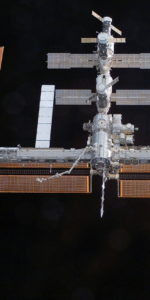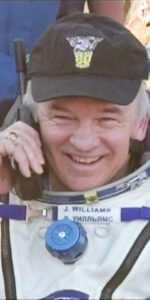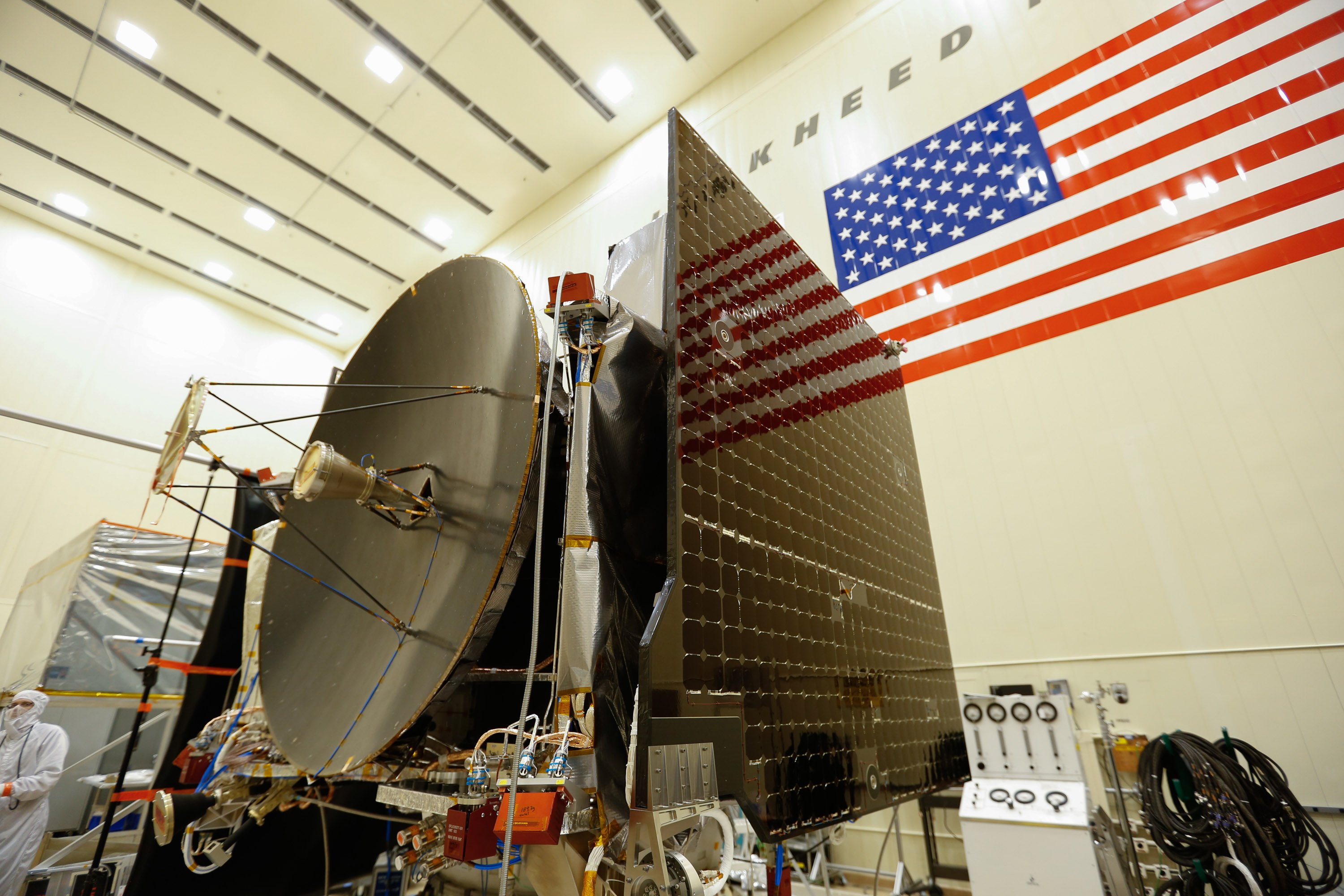
Just two days now remain before NASA’s $800 million Origins, Spectral Interpretation, Resource Identification, Security, Regolith Explorer (OSIRIS-REx) spacecraft—the third member of the New Frontiers medium-class exploration program—launches on a multi-year expedition to gather samples from Asteroid 101955 Bennu and return them to Earth for scientific analysis. Liftoff of OSIRIS-REx aboard a United Launch Alliance (ULA) Atlas V booster is currently targeted during a two-hour “window,” which opens at 7:05 p.m. EDT on Thursday, 8 September. Opportunities to launch the spacecraft remain available for 33 days, through 12 October.
Rising from Space Launch Complex (SLC)-41 at Cape Canaveral Air Force Station, Fla., the Lockheed Martin-built spacecraft will be deposited onto a trajectory which will see it gain a gravitationally-assisted boost from Earth in September 2017, ahead of rendezvous with Bennu in August 2018. It will then set to work on a lengthy imaging and mapping campaign, in order to select an appropriate sampling location. In July 2020, OSIRIS-REx’s 11-foot-long (3.35-meter) articulated arm and sample collector head will gather between 2 ounces (60 grams)—about the same volume as an average candy bar—and 4.4 pounds (2 kg) of regolith from Bennu’s carbon-rich surface. These priceless extraterrestrial grains will be encapsulated inside a Sample Return Canister (SRC) and transported back to Earth for a parachute-assisted landing at the Utah Test and Training Range in September 2023.
This audacious mission has its origins last decade, when OSIRIS-REx was selected as one of three candidates—alongside the Basin Sample Return Mission, headed for the lunar south pole, and the Surface and Atmosphere Geochemical Explorer (SAGE), bound for Venus—in the summer of 2009. Six months later, OSIRIS-REx and SAGE were selected for $3.3 million concept studies, focused on implementation feasibility, cost, management, and technical plans. Finally, in May 2011, OSIRIS-REx was chosen as the winning candidate and the third member of NASA’s New Frontiers effort, following in the footsteps of New Horizons to Pluto and the recently-arrived Juno orbiter to Jupiter.
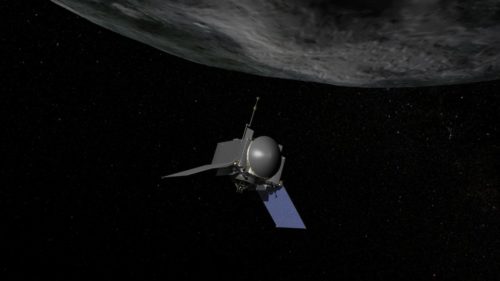
Its principal objectives were to return a sample of pristine carbonaceous asteroid material to Earth for analysis, as well as mapping its global properties, chemistry, and mineralogy, examining the sampling location, and measuring the so-called “Yarkovsky effect.” The latter are minute thermal forces imposed by the Sun on asteroids. “Like an asphalt road on a hot day, [the asteroid] absorbs most of the sunlight that hits it and later radiates this energy away as heat,” NASA noted. “This radiation gives Bennu a tiny push…which gradually changes its orbit over time.” Due to the irregular shape, motion, and composition of asteroids like Bennu, the Yarkovsky effect is equally irregular and developing a clearer understanding may enable planetary scientists to better understand how these objects change their orbits and become potential hazards to life on Earth.
And the asteroid selected for study by OSIRIS-REx carries the potential to cause great harm and destruction. Measuring about 1,614 feet (492 meters) in diameter, Bennu is an intrinsically dark “carbonaceous” asteroid and a member of the “Apollo” group of near-Earth asteroids. It is an “Earth-crosser” and has been classified as a Potentially Hazardous Object (PHO), in that it may pose a future impact risk to our world. There exists around a 0.037-percent chance that Bennu may hit Earth sometime in the late 22nd century. Discovered in September 1999 by the Lincoln Near-Earth Asteroid Research (LINEAR) Project, Bennu initially received the rather drab nomenclature of “(101955) 1999 RQ36,” before receiving its final name—courtesy of a nine-year-old student—in early 2013. It orbits the Sun every 14 months, and its path comes within 213.8 million miles (344 million km) of Earth every six years, but the likelihood of a future impact cannot be precisely determined without a more substantial knowledge of its physical properties, specifically its bulk mass and Yarkovsky force. What is definitively known is that Bennu is roughly spherical in shape, with a pronounced equatorial bulge, and carries an estimated mass of 85 million tons.
Asteroids, of course, are recognized as remnants from the dawn of our Solar System and the carbon-rich nature of Bennu raises the tantalizing possibility that it may also carry the organic molecules for life. Certainly, organics have been found in meteorites and comet samples and analysis by OSIRIS-REx may allow for the identification of volatiles and organic molecules which could have contributed to life on Earth. Life and death, however, are close bedfellows. As a PHO, Bennu’s threat to our descendents is significant enough to earn it a place on the Sentry Risk Table. And it was with this in mind that OSIRIS-REx gained its name: for Osiris was the ancient Egyptian god of the dead, offering a nod to the death and devastation which could be wreaked, should an object like Bennu ever enter our planet’s immediate neighborhood.
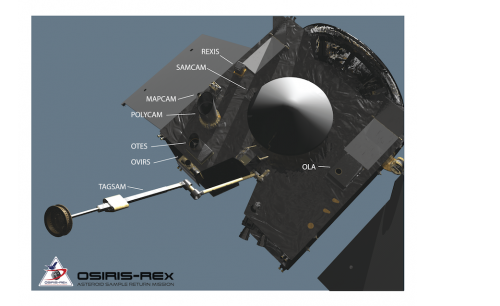
Following the selection of OSIRIS-REx in May 2011, the program moved swiftly, under the management of NASA’s Goddard Space Flight Center (GSFC) of Greenbelt, Md. Construction of the spacecraft got underway in early 2014, following the Critical Design Review (CDR), which saw it move “from paper to product,” in the words of OSIRIS-REx program executive Gordon Johnston of NASA Headquarters. By November, the spacecraft’s core structure was mated to its hydrazine fuel tank and, in February 2015, it sailed through its System Integration Review (SIR) at prime contractor Lockheed Martin’s Littleton, Colo., facility. This review validated its scientific instrumentation, its electrical and communications systems, and its navigational hardware, allowing engineers and technicians to press ahead with assembling the spacecraft.
Within weeks, OSIRIS-REx passed Key Decision Point (KDP)-D as independent reviews of the program’s technical health, schedule, and cost allowed it to progress into the development of systems, testing, and integration in the Lockheed Martin high bay. In late June, the first of five scientific instruments—the microwave-oven-sized OSIRIS-REx Thermal Emission Spectrometer (OTES)—was delivered for integration. Built by Arizona State University, OTES will provide mineral and thermal emission spectral maps of Bennu, with a wavelength range capable of identifying silicate, carbonate, sulfate, phosphate, oxide, and hydroxide minerals. Moreover, it is expected that OTES data will allow for the determination of surface physical properties, including particle sizes.
The arrival of OTES opened the floodgates for four more instruments. By early July, the OSIRIS-REx Visible and Infrared Spectrometer (OVIRS), built by NASA-Goddard, arrived for integration. Tasked with analyzing Bennu at visible and infrared wavelengths, OVIRS would allow for full-disk spectral maps of the asteroid at resolutions of just 66 feet (20 meters), as well as exceptionally fine resolution—between 0.3 feet (0.08 meters) and 6.6 feet (2 meters)—around the location of the sampling site. In fact, OVIRS would be capable of mapping mineralogical and molecular components across Bennu’s surface and is expected to help identify the sampling site. It will be powered-on shortly after launch and will be tested during OSIRIS-REx’s flyby of Earth in September 2017.
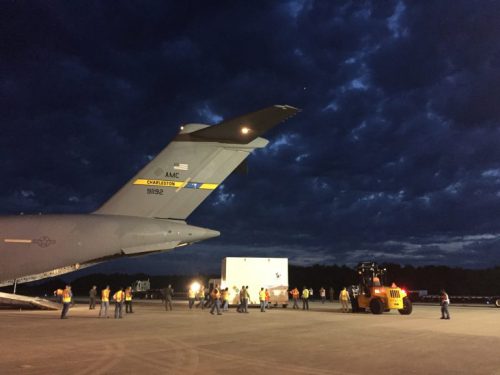
Heading smoothly through its Mission Operations Review (MOR) in mid-July 2014, the spacecraft subsequently received its three-piece OSIRIS-REx Camera Suite (OCAMS). As well as mapping Bennu’s surface, OCAMS would support reconnaissance, high-resolution imaging, and characterization of the sampling site. Provided by the University of Arizona’s Lunar and Planetary Laboratory, the camera suite consisted of a PolyCam telescope for long-range imaging of Bennu from a distance of 1.24 million miles (2 million km), a MapCam to search for satellites and outgassing plumes and a SamCam to continuously image the sampling site. Significantly, the OCAMS hardware will carefully analyze OSIRIS-REx’s sample collector to verify that a surface specimen is successfully retrieved.
Shortly after the arrival of its third instrument, the spacecraft received its high-gain antenna and twin solar arrays in October. The stage was thus set for five months of environmental testing, during which OSIRIS-REx was put through its paces to simulate the vacuum, vibration, and extreme temperature conditions of its mission. During this period, the final two instruments were delivered and integrated. Shortly before Christmas, the Canadian-built OSIRIS-REx Laser Altimeter (OLA) arrived at Lockheed Martin’s facility, followed by the student-built Regolith X-ray Imaging Spectrometer (REXIS) in early January 2016. OLA provides a scanning and lidar system for high-resolution topographical measurements and navigational and gravitational analyses of Bennu’s surface. Funded by the Canadian Space Agency (CSA), its inclusion aboard OSIRIS-REx provides Canada with ownership over 4 percent of the spacecraft’s returned samples. Meanwhile, REXIS has been developed by students from MIT and Harvard and will produce an X-ray spectroscopic map of Bennu, complementing the mineralogical observations of OTES and OVIRS.
Entering the year of its launch, OSIRIS-REx was having its hardiness tested. In February, it was hoisted into a 65-foot-tall (20-meter) vacuum chamber at Lockheed Martin’s facility, where it was powered “on” and “off” in conditions of vacuum and the extreme heat and frigid cold that it will experience during its seven-year journey to and from Bennu. With liquid nitrogen drawing temperatures down as low as -170 degrees Celsius (-274 degrees Fahrenheit) and a powerful light simulating the Sun, OSIRIS-REx was tested continuously over a 22-day period.
At length, it undertook the 1,600-mile (2,500-km) journey aboard an Air Force C-17 transport aircraft from Buckley Air Force Base in Aurora, Colo., to the Shuttle Landing Facility (SLF) at the Kennedy Space Center (KSC) in Florida on 20 May. Within days, it was ensconced in the Payload Hazardous Servicing Facility (PHSF), where it was rotated during a weight and center-of-gravity test and underwent a partial deployment of its twin solar arrays. Last month, the arrays themselves were cleaned and subjected to illumination testing. The arrays have a total surface area of 91 square feet (8.5 square meters) and can generate between 1,226 and 3,000 watts of electricity, depending upon the distance of OSIRIS-REx from the Sun.
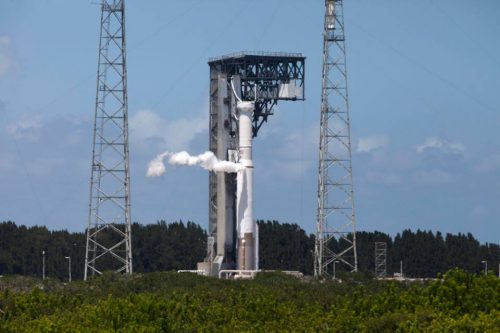
Of course, the spacecraft itself forms only part of the mission. The other half, executed by ULA, has been the processing of the Atlas V booster at the Cape. Flown on 64 occasions, in various configurations, since August 2002, the Atlas V is one of the most reliable launch vehicles in existence, drawing on a decades-old heritage. Yet the configuration for the OSIRIS-REx launch has been employed on only three previous occasions. Known as the “411,” it boasts a 14-foot-diameter (4-meter) payload fairing, a single strap-on solid-fueled booster, and a single-engine Centaur upper stage. All told, the Atlas V 411 can deliver up to 26,530 pounds (12,030 kg) into low-Earth orbit and up to 13,110 pounds (5,950 kg) into Geostationary Transfer Orbit (GTO).
First launched in April 2006 for International Launch Services (ILS), the 411 delivered the Astra-1KR communications satellite into orbit. It was then employed to launch the classified NROL-28 and NROL-34 payloads for the National Reconnaissance Office in March 2008 and April 2011, respectively. After lofting OSIRIS-REx, its next scheduled flight is targeted for October 2018 to transport the Solar Orbiter toward its rendezvous with the Sun.
Processing of the Atlas V 411 for the OSIRIS-REx mission got underway early in August, when the rocket’s 106.5-foot-long (32.5-meter) Common Core Booster (CCB) was erected in the Vertical Integration Facility (VIF) at the SLC-41 site. Powered by the dual nozzles of a Russian-heritage RD-180 engine, the CCB burns liquid oxygen and a highly refined form of rocket-grade kerosene (known as “RP-1”) and produces 860,000 pounds (390,000 kg) of propulsive yield at liftoff. The assymetrical presence of a single solid-fueled booster, strapped to the side, generates an unusual “flying sideways” perspective when each 411 launches. Measuring 55.7 feet (17 meters) tall, the Aerojet Rocketdyne-built booster produces an additional 348,500 pounds (158,000 kg) of thrust to supplement the RD-180 during the first two minutes of ascent. A few days later, the 41.5-foot-long (12.6-meter) Centaur upper stage arrived and was hoisted atop the CCB. The Centaur burns liquid oxygen and hydrogen and its restartable RL-10A-4-2 engine—capable of 22,330 pounds (10,128 kg) of thrust—will support two lengthy “burns” to deliver OSIRIS-REx into the proper orbital position to commence its long voyage to Bennu.
As the complete Atlas V 411 booster underwent a “wet” dress rehearsal in the final week of August, OSIRIS-REx itself was encapsulated within its 14-foot-diameter (4-meter) Large Payload Fairing (LPF). The two pieces of the shell-like fairing were closed around the payload and the LPF was transferred to the HIF on 29 August for integration with the booster. When fully stacked, the Atlas V 411, counting its CCB, its Centaur, and the LPF with OSIRIS-REx inside, stood an impressive 189 feet (57.6 meters) tall.
With the vehicle and spacecraft almost ready to go, the Integrated Systems Test and Flight Readiness Review (FRR) were wrapped up late last week. A standard Launch Readiness Review (LRR) is expected to be completed today (Tuesday, 6 September), ahead of the quarter-mile (400-meter) rollout of the Atlas V 411 from the VIF to the SLC-41 pad surface early tomorrow morning (Wednesday). Upon arrival at the pad, the booster will be carefully centered and propellant umbilicals and electrical and data connections will be established. The track mobiles from the Mobile Launch Platform (MLP) will be removed and ULA engineers will begin preparations for formal countdown operations.
Tomorrow’s article will focus upon the launch, cruise, and rendezvous with Bennu.
Want to keep up-to-date with all things space? Be sure to “Like” AmericaSpace on Facebook and follow us on Twitter: @AmericaSpace
Missions » OSIRIS-REx »



